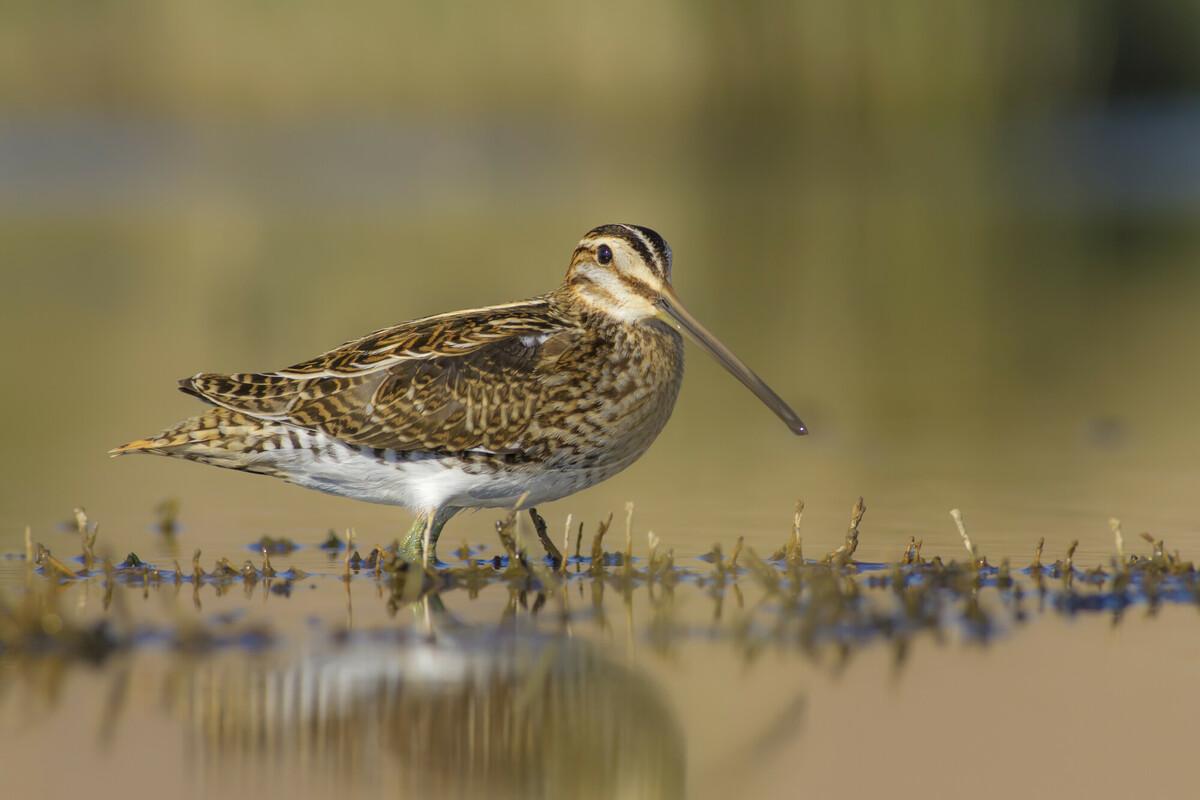
Wetland birds in the Forest
When you think of the Heart of England Forest, the first thought that comes to mind may not be reedbeds, wetlands, or wetland bird species. And whilst it is true that our wetland areas are not extensive, we do have several patches of valuable wetland habitat that are home to wetland birds or waders.

Bird species adapted for wetland living
One group of birds, known as waders, are specifically adapted to live in wet environments, both freshwater and coastal. Most waders have long legs, useful for wading in shallow water, but vary in their plumage and in the size and shape of their bills, which are specially adapted to the bird’s diet. Birds such as snipe have longer bills, which they use like chopsticks to poke deep into the mud and pull out worms. Birds such as plovers and lapwing on the other hand have very short bills that are useful for picking insects off the water’s surface.
Other resident birds of wetlands include birds in the heron family (including egrets), and smaller birds such as reed buntings and warblers (e.g. sedge and reed warbler). These birds are often heard singing in the spring, whilst flitting between stands of common reed (Phragmites). Herons and egrets have long sharp beaks used to spear and swallow fish.
Waders are some of our most vulnerable species in the UK – ground-nesting species such as curlew, lapwing and redshank are very vulnerable to predation, disturbance, and cutting machinery on the backs of tractors, especially the silage cuts during the breeding season.
Wetland species to spot
Here are just some of the birds you should have a good chance of spotting whilst out in our wetter parts of the Forest.
Common and jack snipe
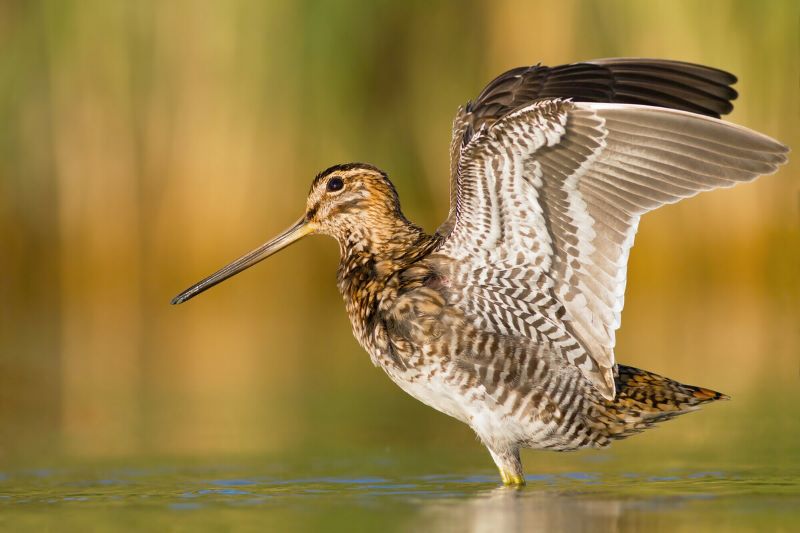
The common snipe is probably the most widespread wetland bird within the Heart of England Forest, with good numbers in the wetland areas in both the north and south of the Forest. They are most often seen when they are startled from their rushy habitat and begin flying erratically away whilst alarm calling. The rest of the time they are so perfectly camouflaged with their streaks of mottled brown that they are almost impossible to spot amongst the rushes.
Jack snipe is another species that we have on some of our land, though this smaller, more secretive species is often more difficult to spot as it tends to sit tight and camouflage rather than fly off when disturbed. Its alarm flight is often much lower and drops down more rapidly into the vegetation, as opposed to common snipe which zig-zag around making a lot of noise.
Lapwing
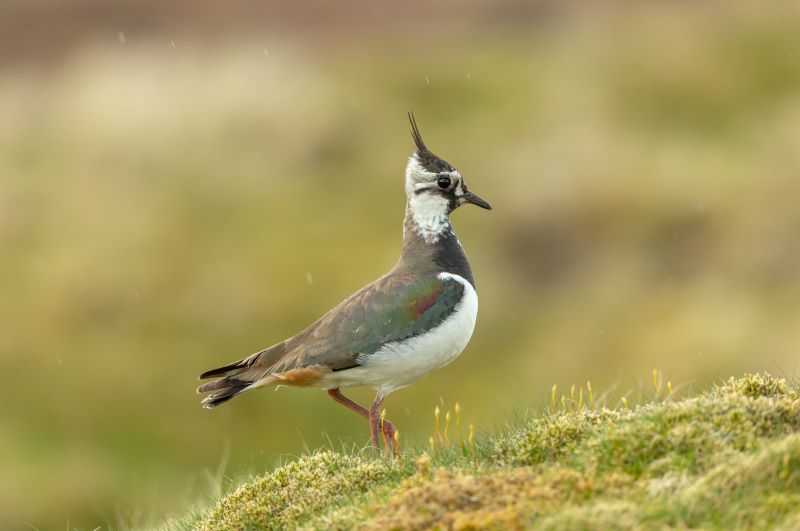
Lapwing are beautiful iridescent birds with graceful flight and a looping ‘peewit’ call. They can be found on both farmland and wetland and generally require areas of shorter grass to nest in, where they can have a good field of view to spot for predators. In agricultural areas, lapwing have benefited from the leaving of stubble in cropping fields to provide a seed source throughout the winter. Being ground-nesting birds, they are particularly vulnerable to predation and ground disturbance from corvids (e.g. rooks and crows), foxes, and dogs.
Reed bunting
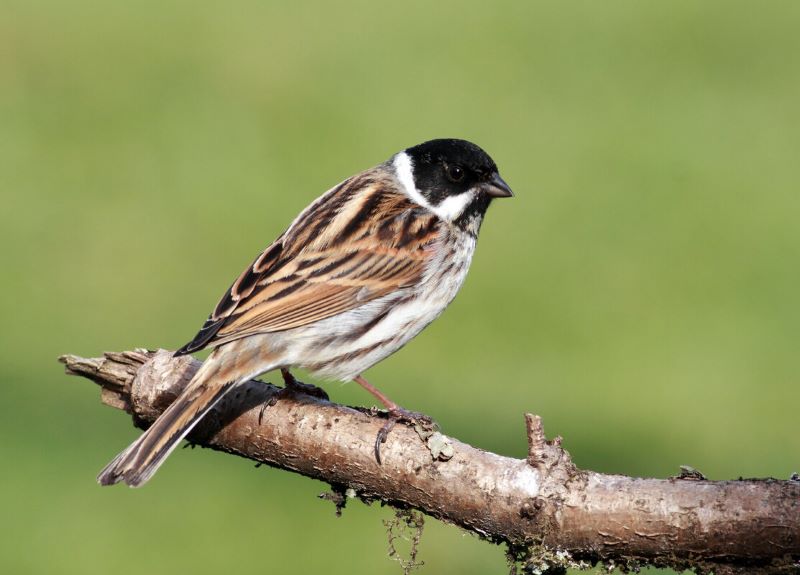
About the size of a sparrow, a reed bunting can regularly be seen flitting from reed to reed, where the beautiful black-headed male may be heard singing during the spring. Male reed buntings often establish territories in the same spot as the year before, low down in the vegetation, but leave the nest building to the females. Reed buntings are also one of several birds that perform distraction displays, which means that the parent birds will feign injury to distract a predator away from the nest.
Teal

Teal are typically seen on sites such around Honeybourne and Spernal, flocking together during the winter. They are small dabbling ducks, meaning that they feed by tipping themselves headfirst into the water (as opposed to diving). A group of teal is called a ‘spring’ because of the way they rise up into the air almost vertically when flushed. Teal are serial monogamists – they form pair bonds that last only one breeding season and then move onto the next!
Green sandpiper
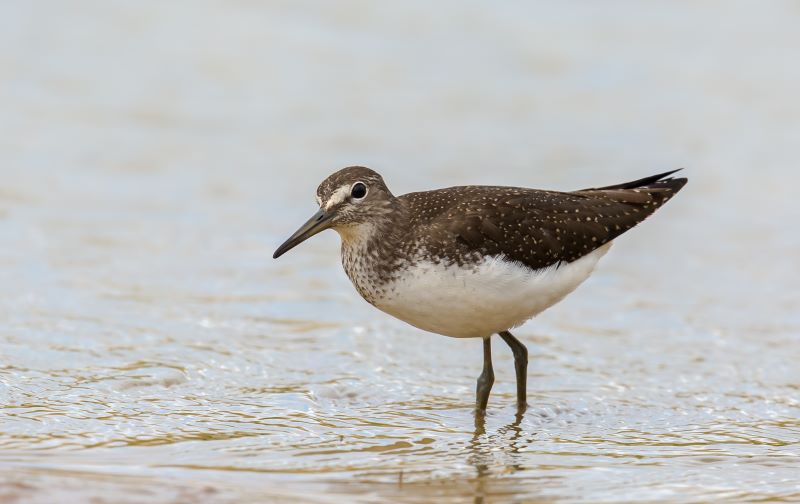
The green sandpiper is a medium-sized bird that is generally found on the edges of marshes, lakes, flooded fields, and wet meadows, where it can be seen picking insects off the surface of the water. Green sandpipers very rarely breed in the UK but are winter visitors to freshwater marshes.
For the past two consecutive winters, a green sandpiper has been seen visiting the areas of new wetland at Oak Wood - we do not know how long this bird has been making a visit here, but we can only hope that the new wetland features created in 2020 will have helped draw it back to visit for multiple years in a row. In the summer, green sandpipers will return to their breeding grounds in the sub-arctic, where they often take over the old nests of other species, such as fieldfare.
And here are two much rarer species that you are less likely to see, but you should still look out for:
Curlew
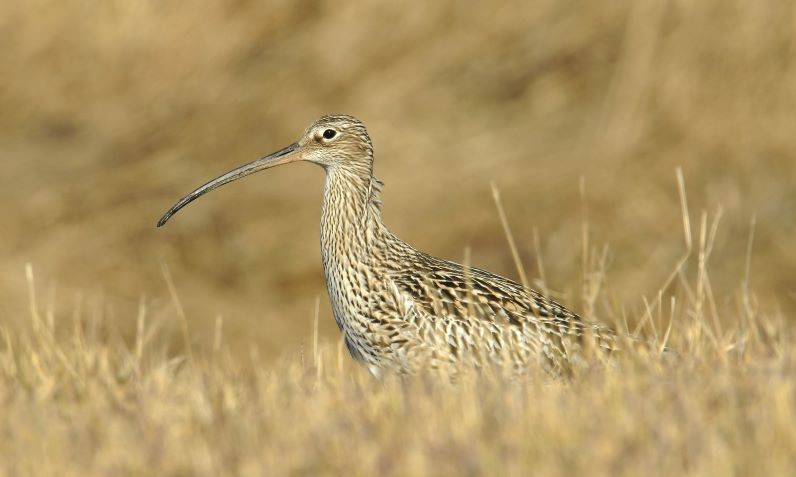
Sadly, the curlew is exceedingly rare in our region now, with its evocative, haunting call reserved mainly for upland marshes and salt flats where it tends to breed. The main stronghold of breeding pairs in the region are within the Severn and Avon Vale, where there have been ongoing conservation efforts for several decades now. Although we do get occasional flyovers and attempts at nesting nearer to Heart of England Forest land, the remnants of suitable, undisturbed habitat are few and far between.
The curlew is an example of a ground-nesting species that has been hit hard by human influences, with loss of wetland areas, frequent cutting regimes, and artificially high meso-predator (middle predator preying on small to medium prey) populations combining to make it difficult for curlew to successfully rear their chicks. As we look at increasing our wetland and grassland habitat across the Forest, we can remain optimistic about one day providing a safe haven for this beautiful species.
Avocet

A more optimistic conservation story of recent times is that of the avocet’s amazing recovery, from a once extinct species to a breeding bird again across the UK. The avocet is a distinctively black and white bird with characteristic upturned beak, that feeds on aquatic insects and their larvae.
The avocet started to recolonise Britain as a breeding species after the Second World War, when the coastal marshes of East Anglia were flooded to prevent any potential future invasion. Since then, the species has increased to almost 2000 breeding pairs. Although we do not yet have any breeding pairs in the Forest, look out for occasional passage bird over Netherstead and Morton Bagot.
Help wildlife thrive in the Forest
Would you like to get involved with the valuable conservation work we do here in the Heart of England Forest?
Sign up for volunteering news to find out about our wildlife surveys and Forest habitat maintenance sessions.



